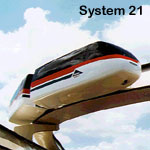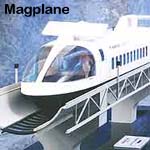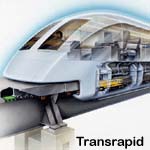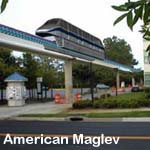|
COMING OIL SHOCKS TO OUR
ECONOMY
But our lives are about to change by the economic disruption caused by our
dependence on oil. The global supply of oil is “peaking” and
henceforth may well diminish every year. At the same time demand is
out-running supply because of the modernization of China, India and
industrialization elsewhere. Just to keep even with today's supply, experts predict we
need to find 6,000 wells per year each producing 1000 barrels per day.
CAN YOUR BUSINESS SURVIVE $6
PER GALLON GAS?
The International
Energy Agency says, ''The world has never faced a problem like this. The
problem will be pervasive and will not be temporary. Oil peaking will be
abrupt and revolutionary. It will become a huge disruption to the economy
and requires massive mitigation more than a decade before new technologies
can have impact.”
Every city needs to have a plan for the economic
shock that will result from Oil Peaking. If we ignore the problem and
business proceeds as usual, we may wake up into a new economic condition
for which we are not prepared as the price of gasoline inevitably goes higher.
We may see gas gouging, rationing and driving restrictions within the
coming decade that cause economic disruption greater than that seen during
the 1930’s depression. The experts state that it will happen, although no
one knows when.
But if we cannot
predict when, we can certainly prepare.
| |
"The economic threat of oil peaking - of
production beginning to fail to meet world demand and the associated
dramatic price increases that can be expected - is staggering,"
studies say. "Without an aggressive alternative fuel production
program, the U.S. economy could lose $4.6 trillion in Gross Domestic
Product and 40 million job years over employment if oil peaks in
2010." |
|
POWER
THE ECONOMY
The $13
trillion American economy relies on a worn and under-maintained
transportation infrastructure that is approaching gridlock. It needs a new
way of growing to meet the future demands of increasing population and to
slow global warming. Each
Automated Guideway Transport (AGT) dollar is expected to generate $5 or more in development projects at station
stops. Transportation investment has historically generated multiplier
investment in adjacent real
estate
property. With our existing transportation systems all over-loaded, an
elevated transportation network is needed for continued growth. AGT offers the triple potential to unclog existing systems,
earn profits and generate new growth of pedestrian villages around station
stops.
Real estate investment multipliers range from four to
ten times transit investment. Therefore each $1 billion invested in AGT will generate $5
billion in pedestrian villages along that route. At each station, an 850' walking radius contains over
2 million square feet of
land area. Zoning regulations allowing 5-to-1 densities would grow small
mixed use pedestrian villages that attract a driverless population. Mixed use development around many stations could grow into the hundreds
of billions of dollars in new tax base. For each AGT
route, thousands of development jobs will be created in both
transport and real estate. These could grow into
millions of jobs as the routes densify and interconnect and offer more
coverage through out the states.
|
|
PRIVATIZATION IS THE ENGINE
Profits are the fuel. Now transit itself can make a profit. Our studies
show that small, lightweight AGT systems can yield (before
tax) returns of 7% to 15%, well in excess of those generated by
government owned systems. The
ridership and fares needed to achieve these results are both reasonable
and achievable. Over time, increasing ridership and the
corresponding revenue will grow more profitable on any fixed cost
installation. Using Colorado as a background to illustrate, we have built
our privatization business case online and invite you to inspect it
on the
Routes page. We are working on demonstration model franchises in Colorado that we believe could prove the
feasibility for profitable operations of a 24 x 7 AGT infrastructure in a
variety of route sizes.
Applied on
a national scale, AGT could provide a
50,000-mile web,
linking airports, highways, metro areas, event centers, downtown areas, malls,
campuses, resorts, hospitals and even some residential neighborhoods. The real estate spin off for
stations and real estate development are likely to be in the trillions of
dollars
revolutionizing our cities while growing a new real estate tax base and an economic engine for decades to come.
Our economic formula is $1 invested AGT infrastructure generates $5 in real estate development, which over 25 years
generates a tax base larger than the initial transport development. During that time, the transportation investors
receive the cash flow.
|
|
HOW MUCH WILL A
TRILLION DOLLARS BUY?
| |
 |
The Interstate Highway System
is made up of 50,000 miles including all the metro area routes and loops. It cost
$425 billion and took 40 years to build. It changed the economics and land
uses of the entire country. A $1 trillion investment in AGT and
clean energy infrastructure would produce a similar 50,000 mile backbone grid of AGT
transport made up of many vendors as with the airline industry. |
AGT will cost, on
average, about $15 to $20 million per mile. If it earns more than other public
investments, then there is plenty of
private money to fuel a trillion dollar AGT industry, For example, the Internet showed how quickly
a trillion in capital formation can occur for national infrastructure. The
Internet attracted and lost over $3 trillion in capital in less than ten years.
Today there is over $2.5 trillion in money markets saving accounts earning less than
3% and waiting for a
better investment climate. The stock market has $8.5 trillion. The Iraqi war is
said to cost over $1 Trillion so far. There is $7.6
trillion in home equities in America and in 2005 alone $2.5 trillion was
refinanced. Our infrastructure as an industry is said to be $6 Billion in size. There is more than enough money for AGT to grow a trillion market
and generate new real estate investments in our cities. Over the next ten years, America's GNP is expected to exceed $150 trillion cumulatively and yet
is dependant on an aging and overloaded transportation network. AGT can do
even more to power the economy by stimulating huge multiplier investments in the real estate around the stations.
Land use historically follows transportation technology from
rivers, to roads,
to rails, to highways, then airports and next to AGT.
We are saying
that AGT is capable of attracting capital for any route that can offer a
10% long term return. Transportation, being America's forth largest
industry and accounting for 11% of the Gross National Product ( now exceeding
$13 trillion) is primed for automation and possesses conditions that are ripe
for explosive growth.
AGT INDUSTRY FORMATION
FACTORS
-
Emergence
of new companies collectively interfacing
-
Variety
of technologies that can be integrated in many configurations
-
Private
sector financing with better returns than the existing methodologies
-
Increased
consumer efficiency
-
Increased
economic development in other related industries
-
Minimum
governmental involvement
-
Clean
Industry is the future
|
|
MULTIPLE PUBLIC BENEFITS
Rarely can one idea do so much and with as many spin offs, as a national AGT
network could do.
Here are number of foreseeable public benefits that could result:
- Replace
a percentage of automobile
demand
- Reduce foreign oil dependence
-
Introduce
higher fuel economy on a national scale
-
Reduce pollution and slow global warming
-
Investment
multiplier of 5 to 1 in new pedestrian development around stations
-
This
new "pedestrian village" growth would generates huge tax revenues
-
Link
airports, metro areas, highways, light rail and other transport systems
-
Reduce
highway congestion
-
Reduce
airport gridlock
-
Stimulate
the travel industry
-
Replace government transit funding so it can be used elsewhere
-
Everyone
can participate
_- Spread of Clean Energy Generation |
|
MULTIPLE DEVELOPMENT CONSORTIA
This infrastructure can set
the conditions for thousands of companies to grow new profits by
incorporating automation, information and robotic technologies in tomorrow's
economy of innovation. In every state, various
industries will be required to organize, fund, build and operate a variety of
AGT transport routes and technologies. Below
is a list of the main industries that would be stimulated by hundreds of thousands of
jobs to build a nationwide AGT backbone network:
|
Propulsion
Systems |
Credit Cards processing |
Voter Campaigns |
|
Travel Info & Reservations |
Cargo Integration |
Vehicle Assembly |
|
Automation System |
Station Development |
Underwriting |
|
Power Distribution |
Raw Concrete & Steel |
Money
Management |
|
Guideway Fabrication |
Seat Laptop Advertising |
Engineering |
|
Economic Feasibility |
Construction Management
|
Energy
Generation |
Comparable
Emerging Transport Technologies
The transit
industry is exploding with ideas and organized efforts to solve growing congestion.
Below are described the huge variety of technologies that are available today. However, the only technology that is currently
attracting funding is traditional rail which is by and large,
ground-based. Traditional rail costs, at a minimum, $35 to $45 million per mile and
is largely funded by the federal government. Here is a list of 150
alternative transport technologies:
|
|
YOU CAN ALSO PARTICIPATE
in a Joint Study Group
We promote collective
creativity as the key to our shared American future. Tomorrow starts today. You can respond to these ideas by selecting one of these choices
below. If
you own businesses that could provide any of these products or services, open
a dialog with us and join our
development consortia
that builds our demo model.
●
View
our web site to inspect our technology and economic feasibility for your
town
●
Register
for our newsletter; a free monthly email to keep up in this industry
●
Become
an "Interactive Member" by joining
our feedback group to shape consensus
Lloyd Goff
Beyond Oil USA
303-671-5340
[email protected]
|
![]()
![]()
![]()




